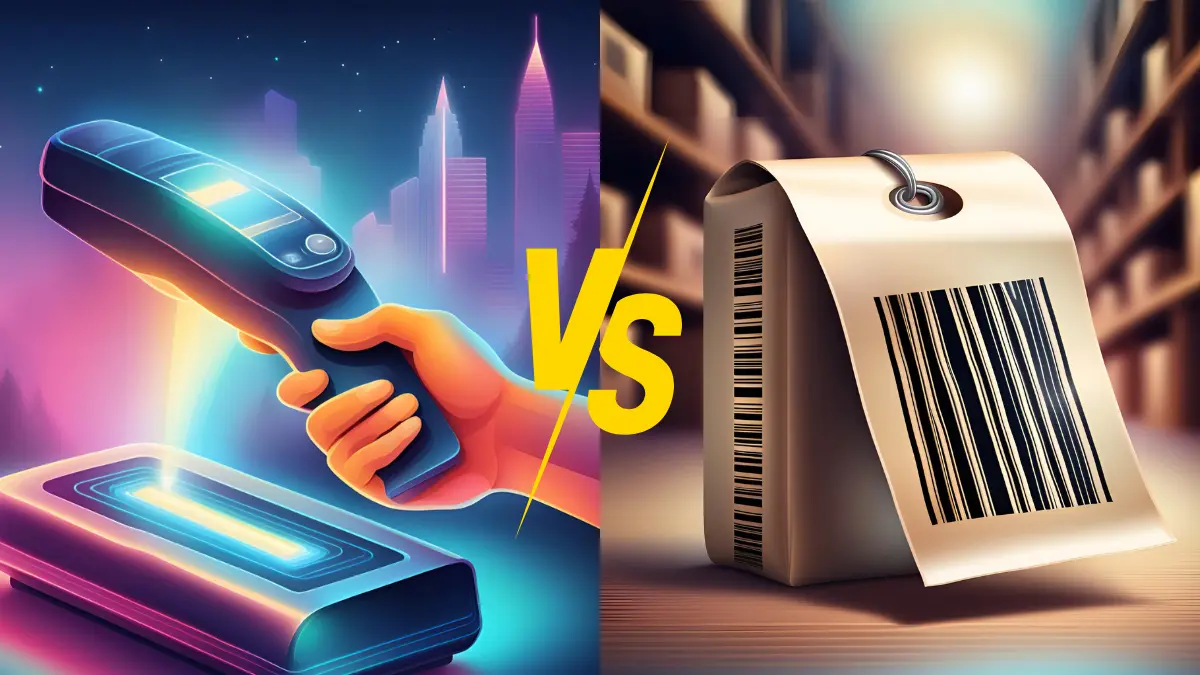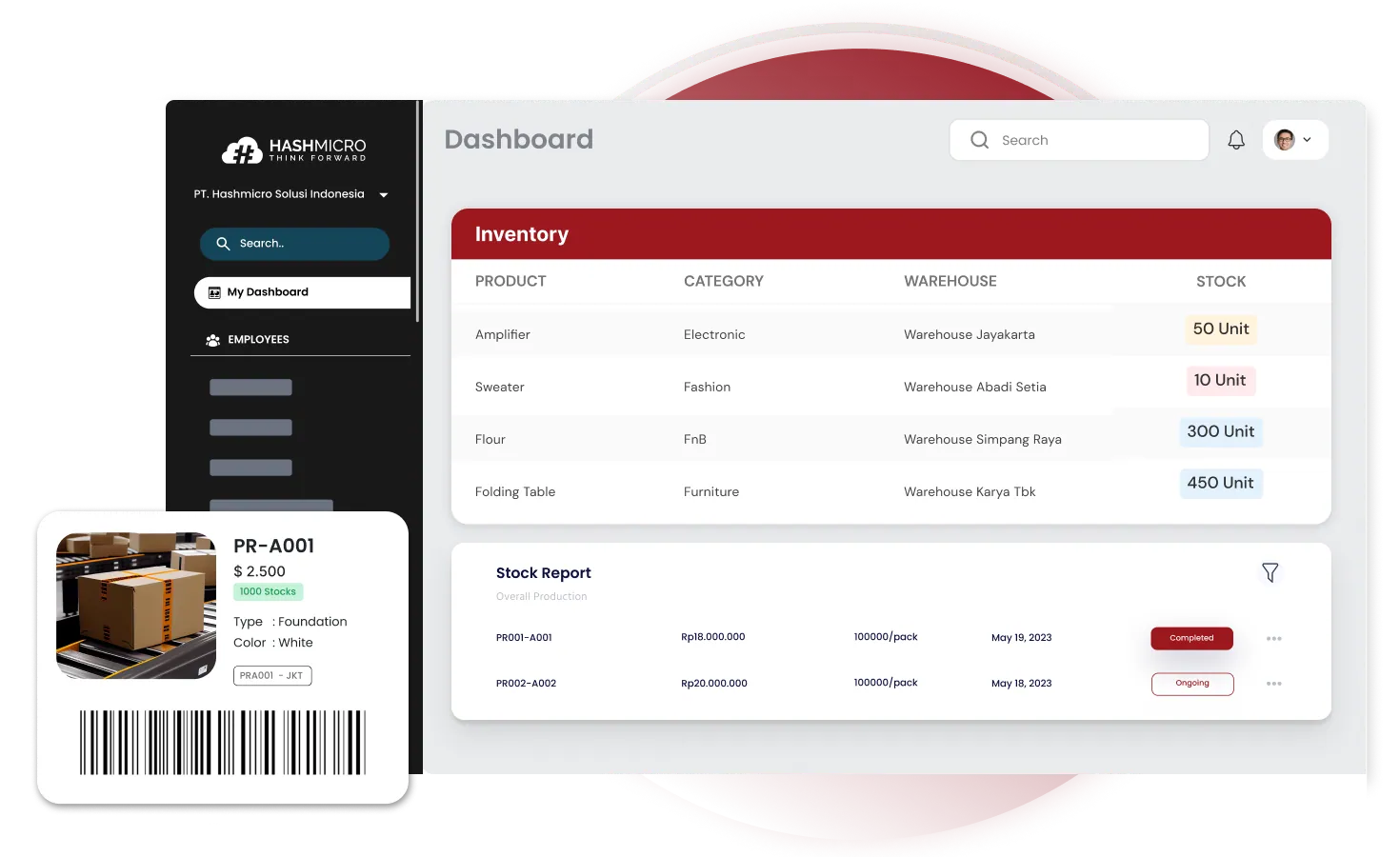Kamusta, Business People! Welcome to the page that will explain RFID inventory management to you completely. Before we start, you may be here because you noticed something wrong and inefficient in your inventory warehouse, diba?
Not only you, According to study by Leyte Normal University that 80% of business people in the Philippines stated that they need an inventory system nowadays. When using manual processes, they experienced time-consuming, difficulty in tracking items’ positions, and inaccurate inventory report. Hay naku, hindi ito positibong sitwasyon!
In connection with this, RFID as an important feature in the inventory system is also increasingly being looked at by entrepreneurs. Therefore, let’s get to know more about what an RFID inventory management system is and how it works.
Key Takeaways
|
Table of Contents

What is RFID Inventory Management?
RFID inventory management is a system that utilizes radio frequency identification technology to automatically track inventory items, providing real-time data on their location and status. This method greatly enhances accuracy and efficiency in stock control and reduces overhead costs.
RFID systems significantly enhance inventory management by assigning an RFID tag to each product in a warehouse, thus streamlining the tracking process. These tags, which carry vital data about the items, allow for precise monitoring of stock levels as products move in and out, ensuring real-time accuracy.
Consequently, RFID tags themselves have 2 different types, each of which has its uniqueness and strengths. Gusto mo bang malaman kung ano ang mga iyon? Pag-usapan na natin ito ngayon.
Types of RFID inventory management tags
 There are 2 types of RFID tags in the best inventory management software you should know when operating a warehouse in the Philippines, such as:
There are 2 types of RFID tags in the best inventory management software you should know when operating a warehouse in the Philippines, such as:
1. Active RFID tags for inventory: These tags have a power source, allowing them to send signals over longer distances. They’re useful for tracking valuable items or large objects across vast areas. For example, vehicle tracking devices, hospital equipment tags, and shipping container trackers.
2. Passive RFID tags for inventory: These tags rely on the scanner’s signal for power, making them cost-efficient and durable. Commonly used in retail, passive tags track products. For example, clothing tags, book labels, product stickers, and event badges.
Pros and Cons of Using RFID Inventory Management for Businesses
We understand that you may be unsure whether RFID inventory management is suitable for your business in the Philippines. Therefore, here are the pros and cons to help you make the right decision.
|
Pros |
Cons |
| Reduces manual errors | Requires ongoing maintenance |
| Offers real-time and accurate updates on inventory locations and statuses | The price of RFID implementation with built-in systems may vary according to your previous business technology |
| Saving time and labor during stock counts | |
| Giving you flexible control over stocks | |
| Improved customer service ensures product availability, boosting satisfaction |
Furthermore, if your concern is about cost, chill lang, in this era, knowing the cost of a system can be known long before implementing it. Interested? Try to know the price of RFID inventory management software through the following banner.
RFID vs Barcode System and Their Differences
 Business people, did you know that the RFID inventory system and barcode are two different things? They may look similar, but barcode and RFID tracking work in different ways. To get a better understanding, let’s take a look at the table below.
Business people, did you know that the RFID inventory system and barcode are two different things? They may look similar, but barcode and RFID tracking work in different ways. To get a better understanding, let’s take a look at the table below.
| Feature | RFID | Barcode |
| Data capture | Reads without direct sight using radio frequency | Requires direct sight for scanning |
| Data capacity | Stores and updates a lot of data on the tag | Limited to printed data, typically product ID |
| Read range | Reads tags from several meters away, simultaneously | Scans individually and close to the scanner |
| Durability | Durable and reusable, even in harsh conditions | Can be damaged or dirtied, becoming unreadable |
| Cost | More expensive due to technology | Cheaper and easier to produce. |
| Implementation | Complex setup and higher maintenance | Easy and cheap to set up and maintain |
Which one is better to use between RFID and barcode system for inventory
After knowing the differences between the RFID tracking system and barcode system above, you might be wondering, which system is better to use in Philippine companies.
Here are some points that you can take into consideration in choosing one:
- Operational volume: Assess if your business handles high volumes of inventory that require rapid processing. Para sa malalaking operasyon, RFID might be more beneficial.
- Budget constraints: Consider your budget for initial setup and ongoing costs. Kung limitado ang budget, barcode systems could be more cost-effective.
- Inventory complexity: Evaluate the complexity of your inventory management needs. RFID is ideal for complex scenarios with varied inventory types and high turnover rates.
- Data accuracy requirements: If your business demands high accuracy and real-time data tracking, RFID provides superior capabilities.
- Physical environment: Consider the physical environment where the system will be used. RFID is less affected by environmental factors like dirt, dust, and moisture compared to barcodes.
- Technological compatibility: Ensure the new system is compatible with your current technological setup.
Choosing HashMicro as the Best Inventory System
 Sino si HashMicro? Ano ang koneksyon sa pagitan ng pamamahala ng imbentaryo ng RFID inventory management ng barcode system?
Sino si HashMicro? Ano ang koneksyon sa pagitan ng pamamahala ng imbentaryo ng RFID inventory management ng barcode system?
HashMicro is a leading inventory system vendor in Southeast Asia. By providing an RFID inventory management system as well as barcode scanning through a single platform, it has become a favorite choice of reliable business people.
Oishi, Tate & Lyle, Brinks, Forbes, and other 1750+ businesses chose HashMicro for its ease of use and comprehensive features. HashMicro also offers a free demo for their customers to give them the best experience and knowledge of whether their system is reliable for customers’ needs.
Some of its key features are:
- RFID automation: RFID inventory management feature to automate the tracking of stock movement in and out of warehouse shelves.
- Receiving control with barcode: Corrects errors in receipt of goods, reducing the possibility of fraud.
- Stock forecasting: A system that analyzes historical sales data, seasonal trends, and other factors to predict future demand for goods.
- Run rate reordering rules: The system figures out the average daily release of goods based on current demand and adjusts reorder times for seasonal changes, like more demand during holidays.
- Fast and slow-moving analysis: This identifies products in the warehouse with high and low sales rates, aiding in strategic decisions such as prioritizing stock orders, planning sales promotions, and removing unsold items
- Quality control management: An inventory system module that ensures the quality of stored, processed, and shipped items meets set standards.
With the features above, if you are considering or want to know more about HashMicro’s RFID inventory management system, a leading e-commerce inventory management software, you can connect with the expert team or even try a free demo starting today. Sa HashMicro, ang pagkamit ng tagumpay sa negosyo ay walang putol na abot-kaya mo.
Conclusion
RFID inventory management is a crucial tool for businesses in the Philippines. It enhances tracking activity with seamless visibility from your gadgets or computers. Choosing the best RFID inventory tracking system can be daunting, but here, you may know the best solution.
HashMicro gives you the best inventory system by offering a free demo. Its comprehensive features with flexible scalability can make your business grow quickly in the Philippines. Now, what are you waiting for? Discover the best side of your business with HashMicro’s RFID inventory management now.

FAQ About RFID Inventory Management
-
How is RFID used for inventory management?
RFID tags for inventory management, when attached to products or pallets, automatically relay information to RFID readers. This enables real-time tracking of product details, enhancing the efficiency, accuracy, and transparency of inventory management.
-
How does RFID help increase inventory accuracy?
After adopting RFID labels, companies can bypass the limitations of barcode scanning, such as needing direct visibility and handling each item for counting. RFID technology enables the counting of multiple items at once without a direct line of sight, each tagged with a unique ID for easy tracking.
-
How do you locate items with RFID?
The most common and simplest method to locate an item using RFID is with handheld readers. These readers work similarly to a Geiger Counter, beeping or ticking faster as they get closer to the tagged item.
{
“@context”: “https://schema.org”,
“@type”: “FAQPage”,
“mainEntity”: [{
“@type”: “Question”,
“name”: “How is RFID used for inventory management?”,
“acceptedAnswer”: {
“@type”: “Answer”,
“text”: “RFID tags for inventory management, when attached to products or pallets, automatically relay information to RFID readers. This enables real-time tracking of product details, enhancing the efficiency, accuracy, and transparency of inventory management.”
}
},{
“@type”: “Question”,
“name”: “How does RFID help increase inventory accuracy?”,
“acceptedAnswer”: {
“@type”: “Answer”,
“text”: “After adopting RFID labels, companies can bypass the limitations of barcode scanning, such as needing direct visibility and handling each item for counting. RFID technology enables the counting of multiple items at once without a direct line of sight, each tagged with a unique ID for easy tracking.”
}
},{
“@type”: “Question”,
“name”: “How do you locate items with RFID?”,
“acceptedAnswer”: {
“@type”: “Answer”,
“text”: “The most common and simplest method to locate an item using RFID is with handheld readers. These readers work similarly to a Geiger Counter, beeping or ticking faster as they get closer to the tagged item.”
}
}]
}




































